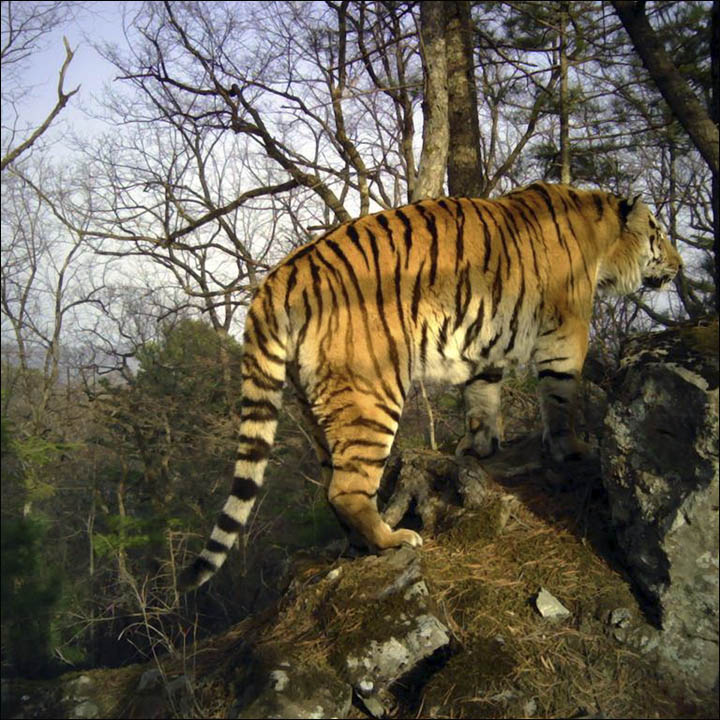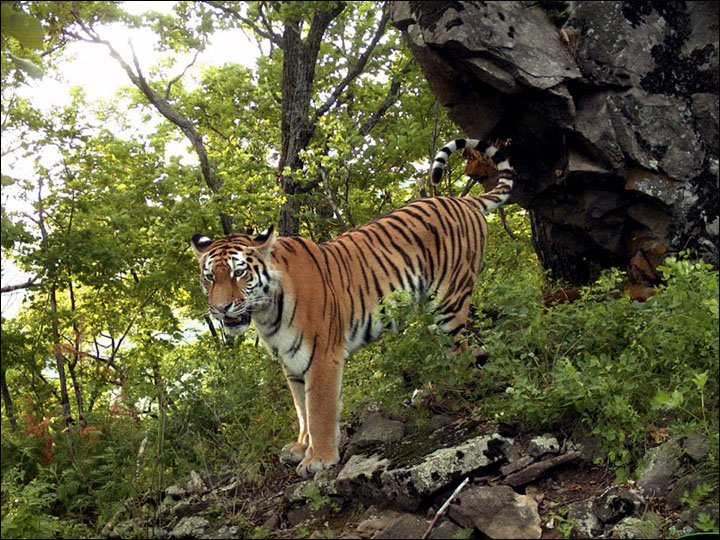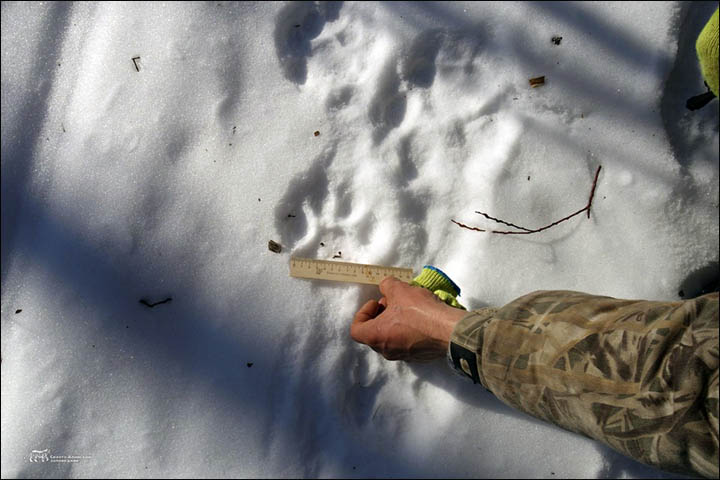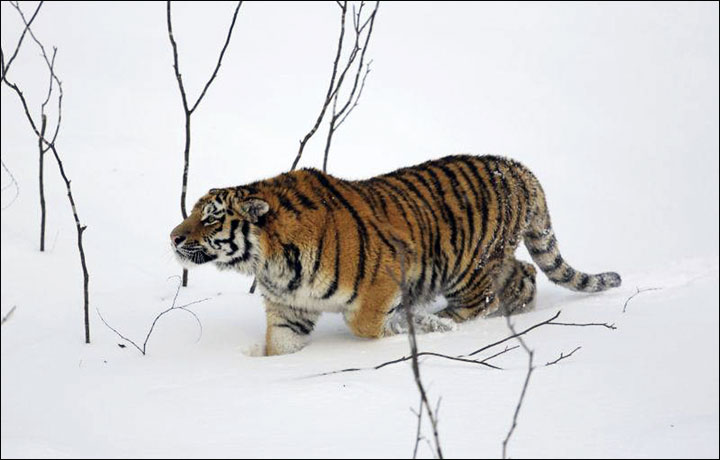16 December 2015
North Korea urged to join Russia and China in fixing reliable numbers for Amur big cats.
Total population of 562 big cats signals a rise in numbers of the threatened species. Picture: Dmitry Mesentsev
The most detailed census of Siberian tigers in the Far East of
Russia, revealed this week, shows a total population of 562 big cats,
signaling a rise in numbers of the threatened species. But there appears
to be a significant sex imbalance, with more females than males
especially in Primorsky region, the most populous area for these rare
animals.The 2015 Tiger Census shows between 417 and 425 individuals alive in this region, of which 100 are males, and between 169 and 172 are females, with 72 cubs. The gender of 76 to 81 animals is uncertain.
In the Khabarovsk region, there were traces of 100-109 tigers, of which 30 to 33 were male, and 36 to 38 were female. Here were up to 28 cubs, with another 8 to 10 big cats where the gender could not be determined.



Currently, it is known that Amur tigers live in Russia and China. Potentially they must dwell in North Korea. Pictures: Land of Leopard, Dmitry Mesentsev
China is committed to next year conducting a similar census of Siberian tigers on its territory, for the first time.
There are hopes that North Korea will join the attempt to measure very precisely the number of the endangered tigers. Sergey Aramilev, the director of the Primorsky branch of the Siberian Tiger Centre, said: 'Currently, it is known that Amur tigers live in Russia and China. Potentially they must dwell in North Korea.
'The Ministry of Natural Resources of the Russian Federation is negotiating with North Korea on participation of (our) experts in the evaluation of the Amur tiger population in the country.'

Tiger Cesus 2015: experts are counting the tiger's traces. Picture: Sikhote-Alin Nature Reserve, Cetre 'Amur Tiger'
According to the director of the Amur branch of the World Wildlife
Fund (WWF), Yuri Darman, the northern part of North Korea has suitable
conditions for the tigers. Analysis of satellite imagery of North Korea
has shown this to be the case, he said. And it is known a female with
two cubs has crossed the border between Russia and North Korea.In recent years, the population of Amur tigers living in the wild has been put at around 500, so a figure of 562, not including China and North Korea, is seen as a sign of the species in recovery after years of being driven almost to extinction by poachers.
The Russian government, including President Vladimir Putin personally, has spearheaded a drive for tougher legal sanctions against poaching and the provision of national parks where tigers can safely roam.
source

No comments:
Post a Comment